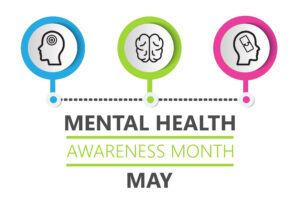The phrase “we disagree to agree” can only be true when conflicts are managed and well handled in a respectful and positive way. Conflict is a normal, and even healthy, part of relationships and it provides an opportunity for growth and development, ultimately reinforcing the bond between two people.
By learning the skills you need for successful conflict resolution, you can keep your personal and professional relationships strong and growing as well as adapt your conflict style to yield productive solutions for everyone involved.
Avoidance
A person using this style will refuse to engage in the conflict. He/she may ignore the situation, avoid the person, change the subject, pretend not to be bothered, or complain to someone else. Avoiding conflict does not resolve the problem and can lead to a stressful work relationship. However, when there is nothing you can do about the situation, when it might be dangerous to become involved in the conflict, or when the issue in dispute does not involve you. Avoidance can be an effective strategy.
Accommodation
This style places a greater emphasis on a smooth relationship that on resolving conflicting needs or concerns. An accommodator will try to maintain surface harmony and peaceful co-existence. He/she may do this by apologizing, making excuses, or promising not to do it again. In extreme cases, an accommodator may even adjust his/her own opinion, desires, or behavior to satisfy another person. Accommodation may be appropriate when it is not a major sacrifice, when it is sincere gesture of good will, or when one is operating out of feelings of obligation or responsibility.
Competition
A competitive style places primary emphasis on the satisfaction of one’s own needs. It may be characterized by blaming, attacking, not listening, or ignoring the feelings, ideas, or needs of the other person. Competition occurs when a person views conflict as a “win-lose” proposition, and fights to “win.” A competitive approach may result in negative feelings and poor relationships. Competition is common in many workplace cultures and professions. Under the best circumstances, it can stimulate change. It can also signal the need to control a situation or to protect something important (your safety, your values, and your economic security.)
Related: R.E.A.C.H: A Helpful Guide in Creating The Best Conflict-Free Environment
Compromise

Compromise is a common means of resolving conflicts. In a compromise, both parties are willing to give up some of what they need (or want) in order to resolve the conflict. This style presumes that a resolution of conflict entails a partial “win” and a partial “loss.” Compromise can be effective if each person retains what is most important to him/her while giving up issues of lesser importance. However, if both parties give up what they really need, the compromise may be an unsatisfactory solution.
Collaboration
Also known as the “win-win” approach. Collaboration can occur when people give up the assumption that someone always has to “lose,” and can approach a conflict with the idea that everyone’s needs are valid and can be satisfied. Collaboration seeks to explore the problem fairly and openly from both sides. It assumes a willingness on the part of the people involved to work together to explore the feelings, concerns, and needs of each person, and to find solutions that are satisfactory to all. This approach usually leads to greater productivity and better work relationships.
Related: Take A Quiz: What Do You Do In Conflicts?
Preventing Conflict

Living with people, working with people, just being with people — there is always potential for conflict. A lot of conflict can be avoided if we think before we speak and choose our responses carefully.
* Go to the Person
When we have a concern with a co-worker, a family member, or a friend, we have a responsibility to talk to the person and try to understand what he or she is thinking….try to see the situation from his or her point of view. When used effectively, ‘Go to the Person’ will help you prevent conflicts. Remember the saying: “Seek first to understand, then to be understood.”
* The Three Filters
These questions will help you filter – or separate – the truths from the untruths, facts from opinions. They will help you decide if you need to address the other person, and how to do it.
Filter #1: Is it True?
Ask yourself if what you are thinking and feeling is really true, or if it is simply your perception of an event that has happened.
Filter #2: Is it Necessary
If something is affecting the way you feel about the other person, your work, or yourself, it becomes necessary that you talk about it so you can resolve the problem.
Filter #3: Is it Kind?
The way we manage a conflict is in our hands. We can let our anger take control, or we can approach the other person with kindness.
If you can answer ‘yes’ to 2 out of the 3 questions, you have an obligation to Go to the Person and resolve the situation. If the answers are ‘no,’ you may need to Get Over it!
These tools — Go to the Person and The Three Filters — will help you have more open and honest relationships with the people in your life
Conflict Resolution Process
Use this four-step process to help yourself resolve conflicts positively
Step 1: Analyze the Situation
Look at the situation from both sides. Before approaching the other person, ask yourself:
- What do I want?
- Why do I want it?
- Why is this important to me?
- Why do I feel this way?
- What does he or she want?
- Why does he or she want it?
- Why is it important to him or her
- Why might he or she feel this way
What are some possible solutions that will satisfy us both?
Step 2: Set the Tone
As you approach the other person, convey a positive attitude.
- Stop any negative reaction. Think about it, cool off, and calm down before you begin to speak.
- State your positive intentions. Explain that you want to work the conflict out, that your goal is to come to a “win-win” resolution.
- Acknowledge the other person. Assume that he or she has positive intentions, too. Say, “Thanks for taking the time to work this out with me,” or something similar.
- Choose an appropriate time and place. Sometimes discussions have to be put off, or scheduled for a later time so you and the other person will have time to think, enough time to truly discuss the situation, or have adequate privacy. You might ask to meet with the person after lunch, during break, or at some other mutually-agreeable time.
Step 3: Discuss the Disagreement
Exchange information.
- Listen. Try to see the situation from the other person’s point of view. Use your own words to paraphrase what you hear.
- Give information. Clearly and objectively explain what you want and why; clarify your feelings and concerns. Avoid blaming, accusing, and attacking.
Step 4: Resolve the Disagreement
Commit to finding a solution that will meet the needs of both parties.
- Brainstorm possible solutions – be creative!
- Discuss the advantages and disadvantages of each idea.
- Choose solutions that satisfy the needs of both parties.









